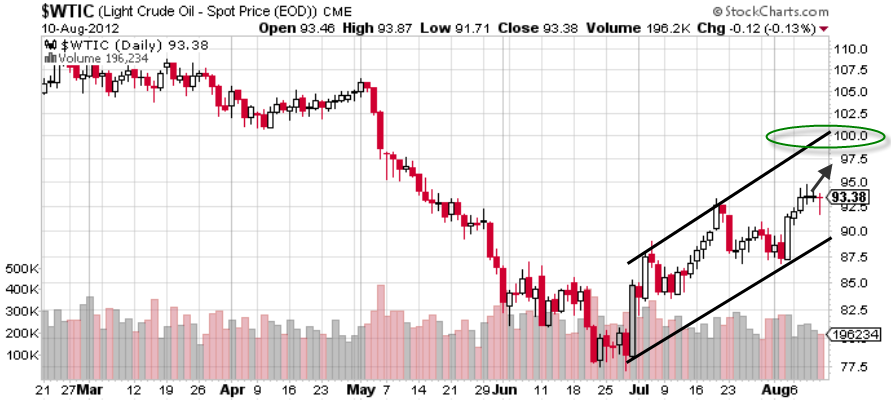By: Steve Sosnick, Chief Strategist
It is customary for many to think that the end of summer represents some sort of quiet period in US markets. Unfortunately, that is rarely the case. Some of the blame goes to public school calendars, many of which show school days resuming before Labor Day, meaning that parents must enjoy their vacations some time before then. Some of the blame goes to major US companies like Walmart (WMT) and Home Depot (HD), which release earnings this week, and the all-important Nvidia (NVDA) which follows next week. But the main culprit is the Kansas City Federal Reserve Bank, which sponsors its Jackson Hole Economic Symposium in late August each year. This Friday’s address by Chair Powell is even more awaited than usual.
My children have outgrown the need for me to care about school calendars (except to know when to adjust my commuting time to account for potential stopped school buses), but no investor can afford to be unconcerned about the events that are due in the coming days. The bulk of earnings season is behind us, but we get key readings of consumer behavior when HD reports tomorrow, Lowe’s (LOW), Target (TGT), and TJ Maxx (TJX) report on Wednesday, and WMT reports on Thursday. There has been no shortage of informed opinions about the health of the US consumer and how tariffs might be influencing their sentiment, but the top- and bottom-line results from key retailers will offer some definitive proof.
Despite the aforementioned earnings and the impromptu pan-European summit 1 at the White House today, the key market event this week is Powell’s speech. Indeed, there will be plenty of other important economic discussions occurring at the conference, but those are typically always sideshows for the main event, the speech from the Chair of the Federal Reserve. The stakes this year are especially high. It is clear that this will be Powell’s last opportunity to be this event’s keynote speaker – no one doubts that he will be replaced by May when his term expires – and it comes at a time when investors are looking for clues to how the Fed might navigate the tricky economic crosscurrents that have recently arisen.
Put simply, the Fed’s dual mandate is at risk of being pushed or pulled in opposite directions. As the Chicago Fed’s website explains 2:
Our two goals of price stability and maximum sustainable employment are known collectively as the “dual mandate.”
Recent economic reports have threatened both the “price stability” and “maximum sustainable employment” goals. The shocking revisions to May and June Nonfarm Payrolls that accompanied the July report at the beginning of this month clearly accelerated the pre-existing concerns about the health of the labor economy. It punctured the narrative of a steady, if uninspiring jobs market, and hastened calls for rate cuts at the September 17th meeting.
Unfortunately, prices are not fully cooperating. Inflation pressures are not anywhere close to what we experienced just a few years ago, but they have never fully met the Fed’s 2% target. That didn’t prevent the FOMC from cutting rates 1% during 2024, but they have refrained from any cuts so far this year. Uncertainty regarding tariffs has sidelined the Fed so far this year, and it still might be too soon to know their effects upon price levels and buyer behavior since most were finalized less than two weeks ago (with China and Mexico among the remaining outliers).
Furthermore, the inflation data is moving in the wrong direction recently. Many of us were shocked by Thursday’s 0.9% jumps in Headline and Core CPI, even if stock markets basically yawned anyway. But while other measures like CPI and the Fed’s preferred PCE Core have been more subdued, they too have been edging steadily higher. On a 3-month annualized basis, Core CPI is showing 2.72% inflation. The problem is that readings have risen by 0.13%, 0.23% and 0.32% over that period. The PCE Core is more subdued, but still directionally challenged. It has risen by a modest 2.56%, but its last three reports also show a steady rise; in this case from 0.18% to 0.20% to 0.26%.
Bear in mind too that the Fed will learn once more about labor and prices before its next meeting. The August jobs report is due on September 5th, after Core PCE on August 29th and before PPI and CPI on September 10th and 11th, respectively. It is difficult to imagine that the Chair will not reiterate its data-dependency.
And of course, there is the wild card of a “lame duck” address. Powell has been on the receiving end of a relatively constant stream of criticism from the President. I don’t have enough of a read on the Chair’s personality to make a reasonable assessment about how he might react when given center stage. After prior Jackson Hole conferences, we have described Powell as “Goldilocks in a Suit” 3 [2021], as Goldilocks feeding the bears 4 [2022], and as Sinatra singing “My Way” 5 [2023]. In short, he can be anywhere from even-handed to strident. My gut tells me that the latter approach is somewhat more likely based upon the data and his desire to show a strong backbone under pressure. But when that data pushes and pulls in opposite directions, like Dr. Doolittle’s fictional animal, traders should be prepared for almost anything.
Originally posted on August 18, 2025 on Traders’ Insight
PHOTO CREDIT: https://www.shutterstock.com/g/Irina+Lavrishcheva
VIA SHUTTERSTOCK
FOOTNOTES AND SOURCES:
1https://www.msn.com/en-us/news/world/the-latest-zelenskyy-and-europe-s-top-leaders-will-meet-with-trump-on-ending-russia-s-war
2https://www.chicagofed.org/research/dual-mandate/dual-mandate
3https://www.interactivebrokers.com/campus/traders-insight/goldilocks-is-a-68-year-old-man-in-a-suit/
4https://www.interactivebrokers.com/campus/traders-insight/securities/fixed-income/goldilocks-feeds-the-bears/
5https://www.interactivebrokers.com/campus/traders-insight/securities/macro/goldilocks-channels-sinatra/
DISCLOSURES
The analysis in this material is provided for information only and is not and should not be construed as an offer to sell or the solicitation of an offer to buy any security. To the extent that this material discusses general market activity, industry or sector trends or other broad-based economic or political conditions, it should not be construed as research or investment advice. To the extent that it includes references to specific securities, commodities, currencies, or other instruments, those references do not constitute a recommendation by IBKR to buy, sell or hold such investments. This material does not and is not intended to take into account the particular financial conditions, investment objectives or requirements of individual customers. Before acting on this material, you should consider whether it is suitable for your particular circumstances and, as necessary, seek professional advice.
The views and opinions expressed herein are those of the author and do not necessarily reflect the views of Interactive Brokers, its affiliates, or its employees.



